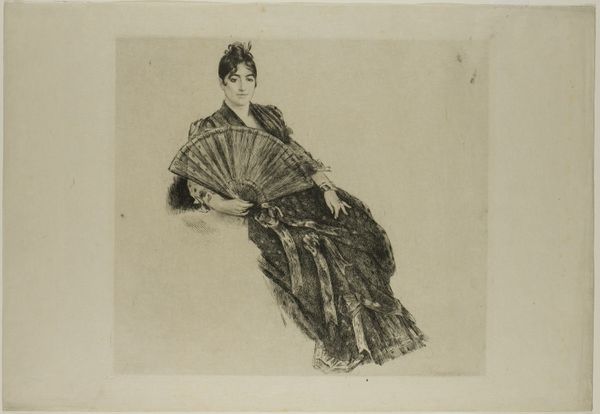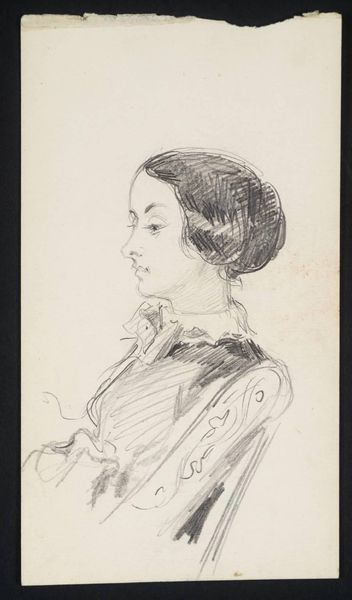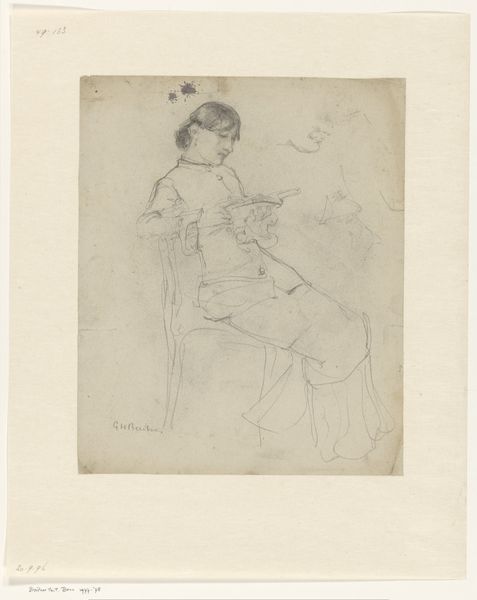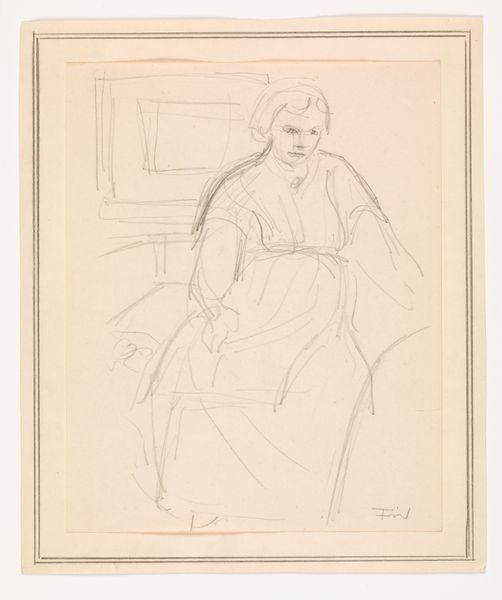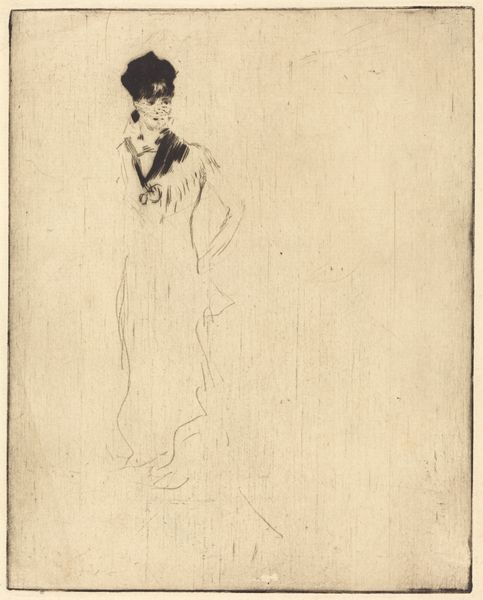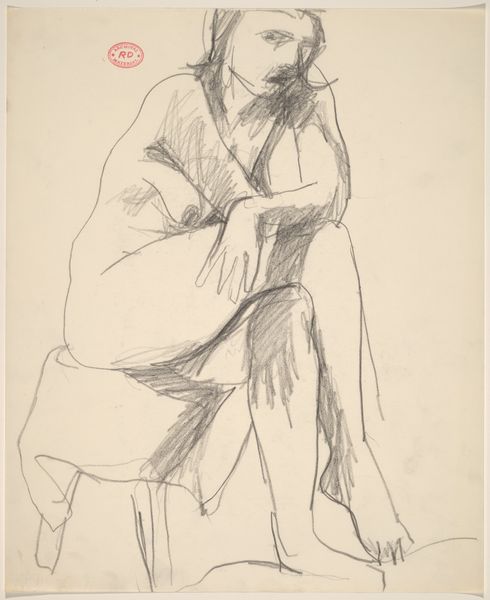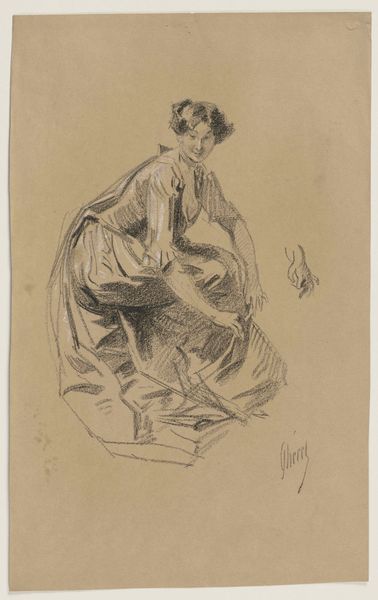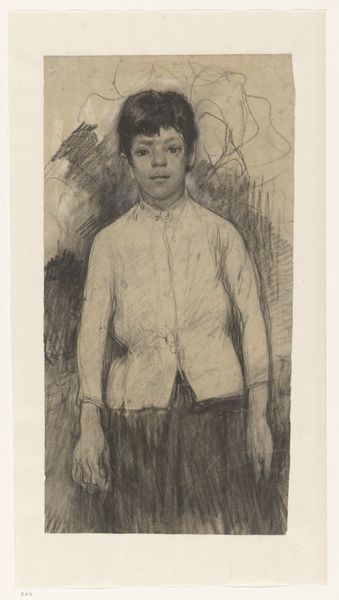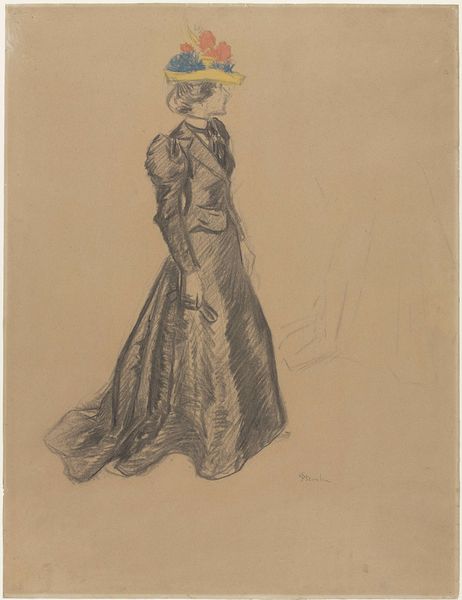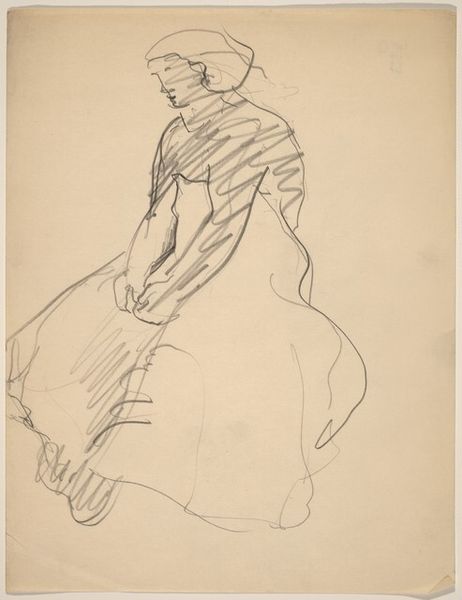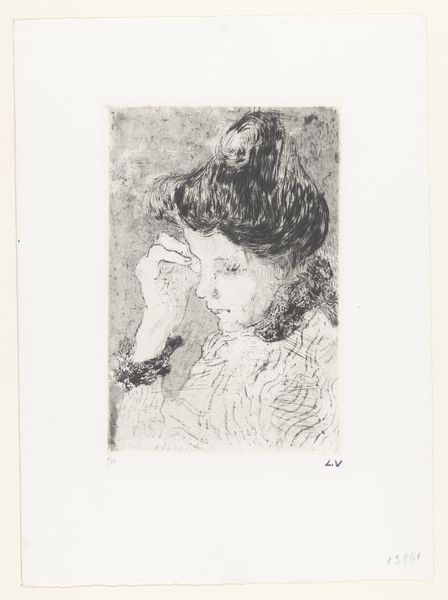
drawing, coloured-pencil, paper, pencil
#
portrait
#
drawing
#
coloured-pencil
#
figuration
#
paper
#
pencil
#
japonisme
Dimensions: height 453 mm, width 311 mm
Copyright: Rijks Museum: Open Domain
Curator: At first glance, the delicate use of color strikes me as both refined and intimate. Editor: Indeed. We’re looking at "Seated Woman in Japanese Clothing," a drawing rendered in pencil, likely dating from between 1891 and 1941. The artist, Leo Gestel, captures a figure draped in what appears to be a kimono. You can find this work on display at the Rijksmuseum. Curator: The presence of Japonisme is very evident. The attire isn’t merely decorative; it’s a conscious adoption and reinterpretation of Japanese aesthetics. These types of costumes have deep cultural importance. This allows people to associate with what is represented through colors and texture; however, what feelings do you have associated with these materials? Editor: Well, at the time this was drawn, the European fascination with Japan offered a tantalizing escape from Western conventions. The woman’s serene posture and the subtle use of pastels evoke a mood of quiet contemplation. One must wonder how the historical and social contexts have reshaped perceptions and value over time? How does this impact society? Curator: It underscores the West’s selective embrace of Eastern aesthetics, stripping them of original context and projecting new meanings onto them. Symbols of the exotic became symbols of freedom. She isn’t only a woman dressed in a costume but a new symbolic expression of society’s changing taste and awareness. Editor: Gestel, though, doesn't seem to offer critique; there isn't condemnation nor is there strong adoration. Do you see that as a neutral expression? Curator: Not entirely. I find there is something more in Gestel’s fascination that comes to a place of reverence and personal desire. She serves not just as a study of foreign influence, but a canvas reflecting an internal desire to break with conventional identity in both style and color. I think about who would commission this kind of art and their intentions with art, which shifts the artwork even more. Editor: It seems we have very different impressions on his intentions. However, I've observed a very compelling tension between the artwork's quiet serenity and cultural complexities and assumptions regarding what the outfit or dress represents for the subject, and potentially for society. I’m grateful we were able to dive deep into this captivating drawing today! Curator: As am I, for unraveling these hidden threads within this artwork. It inspires us to reexamine historical dialogue from diverse perspectives.
Comments
No comments
Be the first to comment and join the conversation on the ultimate creative platform.
